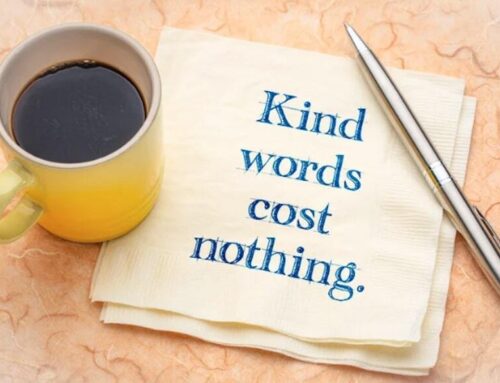
Have you ever encountered individuals whose behavior seems to disrupt everything around them? Such behavior is what we call High Conflict People (HCPs). They exhibit patterns of behavior that can significantly disrupt communications, relationships, and environments.
According to the High Conflict Institute, these individuals often demonstrate distinct traits that can challenge the dynamics within professional settings, even leading to intense fear in the workplace. Recognizing the nature of high-conflict people and how to effectively interact with them is not just a skill but a crucial tool for maintaining productive professional relationships.
Recognizing High Conflict Behavior
One of the most striking characteristics of high-conflict personality disorders is their strong tendency toward blaming others. HCPs frequently externalize faults, refusing to acknowledge their own role in a conflict or problem.
Another pervasive trait is all-or-nothing thinking. Imagine a world where every situation is polarized and any form of compromise is seen as a threat. That’s how a high-conflict person perceives their reality.
Emotional Volatility and Extreme Behaviors
Unmanaged emotions are a hallmark of individuals with high conflict behaviors. Their emotional responses, often disproportionate and unpredictable, can pose significant challenges to conflict resolution.
Linked closely with emotional volatility is the propensity for extreme behaviors. These actions can range from verbally aggressive tactics to physical altercations in the most severe cases. It is not uncommon for high-conflict people to engage in spreading rumors, and they try to recruit negative advocates such as family members, leveraging social dynamics to fortify their position in any dispute.
The Underlying Issues
High-conflict behaviors may often stem from underlying personality disorders, which can complicate interactions significantly. The high-conflict personality theory suggests that these intense behaviors are not just situational but deeply ingrained in the individual’s personality structure.
Impact of High Conflict Personalities on Professional Relationships
High-conflict personalities (HCPs) can profoundly affect professional environments, disrupting teamwork and reducing overall workplace harmony.
Constant Tension and Reduced Team Cohesion
High conflict people often create an atmosphere of ongoing tension among team members. Their combative and confrontational style can lead to frequent disputes, undermining team cohesion and trust. This continuous state of conflict can discourage collaboration and innovation, as team members may avoid interaction to escape potential confrontations.
Impact on Communication and Workflow Efficiency
High-conflict personalities can severely impact communication within a team. Their intense emotions and unpredictable reactions can lead to disrupted meetings and skewed communication channels, resulting in decreased efficiency and delays in workflow.
Furthermore, their tendency to engage in high-conflict behavior often includes interrupting or dominating discussions, which stifles other team members’ contributions and can halt progress.
Increased Turnover and Management Challenges
The presence of a high-conflict personality in the workplace can lead to increased turnover. Employees may feel stressed or demoralized and opt to leave rather than continually face an antagonistic work environment.
This turnover not only affects team morale but also places a continuous strain on management resources, as dealing with high-conflict people involves significant time and effort that could otherwise be dedicated to productivity and development.
The Strain on Mental Health and Job Satisfaction
Dealing with a high-conflict person regularly can have detrimental effects on an individual’s mental health. Employees exposed to this behavior may experience increased stress, anxiety, and even burnout.
The stress associated with navigating these complex interpersonal dynamics can lead to dissatisfaction with the job and decreased overall job performance. Moreover, in some cases, the stress may exacerbate or contribute to issues like more substance abuse among employees.

Identifying and Managing Triggers and Escalating Patterns in High Conflict Situations
Recognizing triggers and understanding escalation patterns are critical in high-conflict situations to prevent and manage disputes effectively. These elements play a crucial role in dealing with high-conflict people whose responses can rapidly deteriorate into dysfunctional interactions.
Triggers of High Conflict Situations
Several triggers can initiate or exacerbate conflicts, especially when involving a high-conflict person:
- Communication breakdowns: Misunderstandings, inaccuracies, or gossiping can generate significant frustration and resentment. These issues often arise from insufficient or unclear information, leading to increased tensions among team members.
- Personality clashes: Individuals with contrasting work styles or communication methods can inadvertently provoke conflict. Such clashes are particularly problematic when neither party is willing to adjust or acknowledge differing perspectives.
- Competition for resources: In environments where resources such as promotions or budgets are limited, competition can intensify, turning healthy rivalry into destructive conflict.
- Unrealistic expectations: When employees are overburdened or feel underappreciated, it can lead to discontent and conflict. This situation is worsened if expectations are not clearly communicated or aligned with realistic capabilities.
- Discrimination or harassment: These serious triggers not only instigate interpersonal conflicts but also create hostile work environments that can escalate rapidly and have legal repercussions.
Escalation Patterns in High-Conflict Situations
Once triggered, high-conflict situations can escalate through several patterns, often exacerbated by personality disorders and unmanaged emotions:
- Personal attacks: A shift from the issue at hand to personal critiques marks a severe escalation, moving the conflict from professional to personal, making resolution significantly more challenging.
- Yelling and blaming: These reactions are indicative of extreme behavior and serve only to shut down productive communication, pushing parties further apart.
- Bringing in others: Emotional manipulation through gossiping to colleagues or unnecessarily involving them in the dispute increases conflict circles, adding more layers of complexity and negativity.
- Stonewalling or withdrawal: When individuals refuse to communicate or engage in solution-finding, any progress toward resolution can be stalled and can deepen the conflict.
Effective Communication Techniques for Dealing With High-Conflict People
Navigating interactions with high conflict people requires specific communication strategies that minimize escalation and foster understanding. Below are some effective techniques that can help manage conversations with someone exhibiting a high-conflict personality:
BIFF Response
One of the key methods to communicate effectively in tense situations is the BIFF response, designed to keep interactions constructive:
- Brief: Keep your responses concise and focused strictly on the matter at hand. This helps avoid the emotional tangents that high-conflict people often exploit and encourages them to reflect on their own behavior.
- Informative: Ensure that your communications are factual. Avoid responding to personal attacks or digressions that are irrelevant to the issue.
- Friendly: Regardless of the hostility you may face, maintaining a calm and professional demeanor is crucial. This helps in de-escalating potential conflicts.
- Firm: Clearly state your position and boundaries to prevent any misinterpretations. Being firm is essential, especially when the other party cannot accept their own faults.
Active Listening
Active listening is vital when dealing with a high-conflict person:
- Pay detailed attention to both what is said and how it is said. Observing nonverbal cues can provide additional context to the person’s own emotions.
- Acknowledge their feelings. Phrases like “I understand you’re frustrated” validate their emotions without agreeing with their stance, which can diffuse tension.
- Ask questions to clarify their point of view. This not only ensures that you have understood their perspective correctly but also demonstrates your commitment to resolving the issue.
“I” Statements
You can adapt your own behavior by using “I” statements to help personalize your expressions without casting blame. Focus on expressing how specific actions affect you, e.g., “I feel overlooked when my points are not considered,” rather than accusatory statements like “You never listen to me!”
This technique helps communicate feelings and needs without escalating the conflict, making it more likely that the other person will respond positively.
Set Boundaries
Another way of changing your own behavior is by setting clear boundaries, especially when dealing with a person who may have personality disorders.
If discussions with this person become counterproductive or disrespectful, it’s advisable to propose a pause: “I think we’re both too heated right now. Let’s take a break and revisit this discussion later.” This not only prevents escalating conflicts but also preserves the dignity of both parties involved, allowing for cooling down and reflection.

Building Empathy and Fostering Understanding in Conflict Resolution
Fostering empathy and understanding is crucial in conflict resolution, especially with a person exhibiting a high-conflict personality. These emotional skills not only facilitate more amicable resolutions but also help mitigate the intensity of the conflict.
Below are some strategies to enhance empathy and understanding, which are vital when dealing with a high-conflict person.
Avoid Judgments
One of the first steps in building empathy with such a person is to consciously avoid making judgments. This practice is particularly important when dealing with someone who may exhibit all-or-nothing thinking.
By suspending judgment, you open a pathway to understanding the person’s viewpoint without the bias that often escalates conflicts. This approach allows for a more objective evaluation of the situation and helps identify the underlying issues rather than focus on the symptoms of the conflict.
Acknowledge Their Humanity
Recognizing the inherent humanity in everyone, even those who might have a personality disorder, is essential in fostering empathy. This acknowledgment can shift the focus from viewing them solely through the lens of their challenging behaviors to seeing them as individuals with unique histories and experiences.
Focus on Common Ground
Finding common ground is an effective strategy for reducing the perceived distance between conflicting parties. It involves identifying shared interests or goals, which can serve as a foundation for building understanding and cooperation.
This method is especially useful in mitigating the unmanaged emotions that often fuel conflicts, creating an environment where both parties feel they have something to gain from resolving their differences.
Ask Open-Ended Questions
Engaging a high-conflict person with open-ended questions is a powerful tool in conflict resolution. These questions encourage them to express their thoughts and feelings more fully, which can provide insights into their motivations and concerns.
Strategies for De-escalating Conflicts and Finding Mutually Beneficial Solutions
When dealing with individuals exhibiting a high-conflict personality disorder, it’s crucial to implement strategies that not only de-escalate conflicts but also facilitate solutions that benefit all parties involved. These strategies should be distinct and effective, particularly when managing the extreme behavior and all-or-nothing thinking associated with such personalities.
De-escalating Body Language
Non-verbal cues play a significant role in communication, especially in tense situations. Adopting a non-threatening, open posture can significantly reduce the perceived aggression or defensiveness in an interaction.
This involves:
- Maintaining an appropriate amount of eye contact
- Keeping your arms uncrossed
- Using nods to show understanding
Brainstorm Together
Engaging a high-conflict person in a collaborative brainstorming session can shift the dynamic from confrontation to cooperation. Encourage them to voice their ideas for resolving the conflict and constructively contribute your suggestions. This inclusive approach can help break down barriers and lead to creative solutions that might not have been considered otherwise.
Concession Trading
This strategy involves each party agreeing to give up something of lesser importance to them in exchange for something they value more. By focusing on give-and-take, you can move past high conflict patterns and foster a spirit of compromise. It’s important to simply focus on concessions that are equitable and acknowledge each party’s needs and priorities.
Involve a Mediator
Sometimes, an impartial third party can be instrumental in resolving conflicts, especially when the usual interactions are laden with friction. A mediator who is trained to handle a high-conflict personality disorder and related complexities can facilitate negotiating a solution that is acceptable to all involved.

Practical Exercises and Role-Playing Scenarios for Practicing Conflict Resolution Techniques
Role-playing exercises are excellent tools for developing skills in managing conflicts, especially when dealing with individuals showing high-conflict personality disorders.
Here are some practical exercises designed to simulate real-world scenarios involving a high-conflict person, helping participants practice and refine their conflict resolution strategies.
Scenario 1: The Office Gossip
Alex, known for his extreme behavior, spreads a rumor about his colleague Sam’s work ethic, affecting Sam’s reputation.
Role-Play Instructions:
- Setup: One person plays Alex, another plays Sam, and a third acts as a mediator.
- Objective: Sam confronts Alex about the rumor, aiming to clear up the misunderstanding.
- Focus: Use self-awareness and self-reflection to discuss the impact of Alex’s actions on Sam, promoting understanding and empathy.
- Resolution: Alex acknowledges his role as the target of blame and agrees to make amends.
Scenario 2: Resource Allocation Dispute
Two managers, Jordan and Casey, argue over the allocation of a limited budget for their projects.
Role-Play Instructions:
- Setup: Jordan believes he deserves a larger share due to the scope of his project.
- Objective: To negotiate a fair distribution without escalating the conflict.
- Focus: Each participant expresses their needs using “I” statements and identifies key characteristics of what they deem fair.
- Resolution: Trade concessions until both agree on a solution that considers the priorities of both parties.
Scenario 3: Deadline Missed
Taylor misses a critical deadline, and her manager, Lee, who tends to exhibit a high-conflict personality disorder, reacts harshly.
Role-Play Instructions:
- Setup: Lee confronts Taylor, making her the target of blame.
- Objective: Taylor must address the situation calmly, explaining the reasons for the delay.
- Focus: Practice de-escalation techniques to reduce anxiety and foster a constructive dialogue.
- Resolution: Lee and Taylor collaboratively develop a plan to manage deadlines better in the future.
Scenario 4: Disagreement Over a Minor Issue
Chris and Pat disagree over something trivial, like the setup of office furniture, which escalates due to their differing personality disorders.
Role-Play Instructions:
- Setup: Both parties argue their points, turning a minor issue into a significant conflict.
- Objective: To resolve the conflict by finding common ground.
- Focus: Participants use active listening and ask open-ended questions to understand each other’s perspectives.
- Resolution: Both agree on a compromise that rearranges the office beneficially for both.
Embrace Effective Conflict Resolution
Mastering conflict resolution with high-conflict people requires patience, understanding, and the right techniques. By practicing through role-plays and understanding key strategies for de-escalation and empathy, individuals can enhance their ability to navigate challenging interactions more effectively.
If you’re seeking further guidance, Resolve’s online conflict resolution training is tailored for various industries and sectors. We offer customized training for employees as well. Resolve Conflict Resolution Training is ready to assist you in developing these essential skills.

About the Author: Jeremy Pollack
Jeremy Pollack, Ph.D. is the founder of Defuse De-Escalation Training, a sister company of Pollack Peacebuilding Systems, the largest workplace conflict resolution training and consulting firm in North America. He actively participates in de-escalation training and consulting initiatives for a variety of industries, from Fortune 500 companies to well-known non-profits. Besides his Ph.D. in Psychology from Grand Canyon University, Jeremy holds a Master’s Degree in Negotiation, Conflict Resolution, and Peacebuilding (NCRP) from California State University, Dominguez Hills. He is also a member of several organizations focused on conflict resolution and peacebuilding, such as the Peaceful Leadership Institute, the Association for Conflict Resolution, and the Division 48 (Division of Peace Psychology) of the American Psychological Association. Jeremy also holds several certifications in the field of training and coaching: he is a Certified Organizational Development Coach (CODC™), a Certified Clinical Trauma Specialist-Individual (CCTS-I™), and an Associate Certified Coach (ACC) under the International Coaching Federation.









